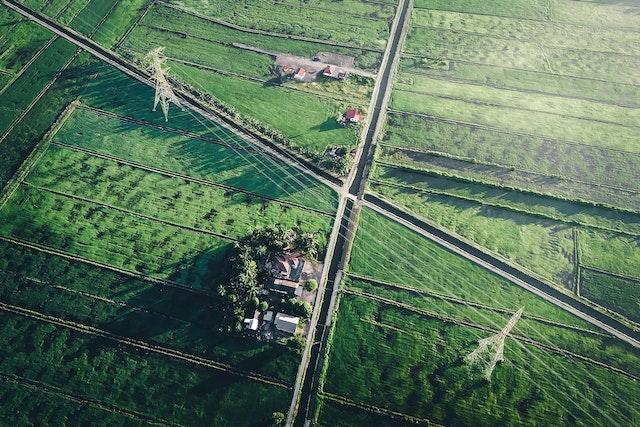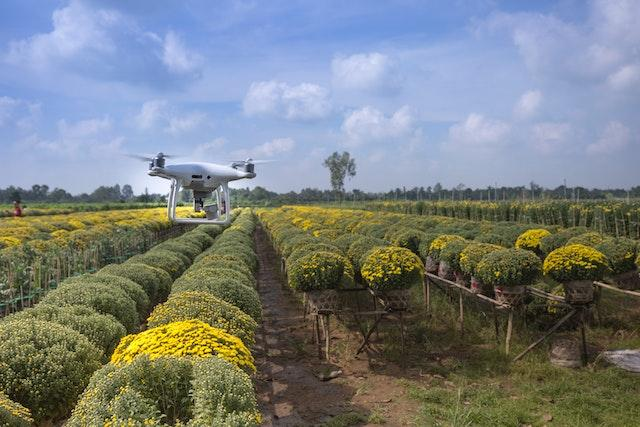Technology has changed every sector, from finance, military, and property management to agriculture. The use of drones in agriculture has significantly increased, replacing tasks that earlier required expensive approaches. Also, the availability of agricultural drones in different sizes means small and large-scale farms can afford them.
Besides, integrating technologies like GPS and AI in drones makes them more suited to the tasks. As a farm owner, you might contemplate integrating drones into your farm activities. If you are unsure about adding them to your farm, this guide is helpful for you. It explores the benefits and challenges of using drones in agribusiness.
Rise of Use of Drones in Agriculture
As other sectors embrace drone technology, agriculture is also making some serious progress. The use of farming drones has increased in recent years, easing and improving how people do farming. These agricultural unmanned vehicles have changed the sector because drones have taken charge of where people used to use airplanes and other expensive technologies.
The use of drones is projected even to rise higher as people race to embrace smart agriculture. It’s projected that by 2028, the industry will be worth $8.9 billion from $2.1 billion in 2021.

Drones come in different sizes and configurations to suit various tasks. They can also be customized, while others are multipurpose, increasing their usability, and helping to reduce the need for buying multiple drones.
Some of the common functions of drones include;
- Land Surveying
- Soil monitoring
- Collection of soil and water samples
- Land irrigation
- Crop spraying
- Pest and disease monitoring
- Livestock management
- Aerial land imaging
Benefits of Using Drones in Agribusiness
Using drones to perform different agricultural tasks comes with many benefits. They are why people are ditching the old technology and adopting these tech gadgets. These are some of the main benefits of using drones on your farm.
1. Cost Reduction
The introduction of drones has helped to cut the overall cost of farm operations. Before drone technology, farms used to rely on tractors and aerial spraying using small planes. The use of planes to spray is only economical under large farms. However, small farms using manned planes are expensive. Drones are excellent for small farms since they are efficient, precise, and cost-effective.
Apart from spraying, agricultural UAVs are essential for providing high-definition imagery at a lower cost than satellite imaging. Before drones became available, farmers relied on satellite imaging, which was unreliable as they were not real-time images. But, with drones, they can get real-time images whenever needed, as flying the equipment isn’t expensive. Drones are also cheaper to acquire for many farmers making data collection efficient and quick.
2. Improved Data Accuracy
Flying a drone around the farm provides real-time data. Usually, drones are fitted with HD cameras to monitor the farm. Additionally, the control consoles have screens that allow the operator to get live feed from the field. They deliver high-definition images allowing the detection of pests, diseases, and other potential issues.
Besides monitoring crops, livestock farmers usually use drones to monitor their herd. Especially for free-range livestock, using a drone to monitor animals helps gather accurate and real-time data, which enables the farmer to take corrective measures on time.
3. Enhances Farm Efficiency

Using a drone in farms is more efficient than using manual labor. The main reason is that it can cover large areas quickly and efficiently. For instance, spraying using drones is faster, offers high precision, and improves efficiency.
GPS technology and artificial intelligence allow drones to work autonomously, resulting in excellent efficiency since they can follow a predetermined path without human intervention.
4. Increased Production
One of the major targets in agricultural technology is maximizing production. Drones are playing a vital role in increasing production. Through the provision of accurate and real-time data, it enables farmers to apply the corrective measure on time.
In livestock production, drones help create 3D modeling to estimate market value. Plus, you can use drones to monitor pasture utilization; hence easy to manage livestock feeding programs for maximum returns.
5. Reduced Environmental Impact
Drones use rechargeable batteries to operate. Unlike planes that use fossil fuels, drones don’t emit harmful exhaust fumes. Therefore even if you fly a drone daily on your farm, it doesn’t cause environmental pollution.
Besides, drone application is characterized by high accuracy. For instance, when spraying, it’s possible to spot pests or diseases in specific areas and spray without the need to apply to the whole field.
Challenges of Drone Usage in Agribusiness
Despite the uptake of drone technology in agriculture, it still faces challenges. Some of these limitations are:
6. Limited Range
One common problem that cuts across all types of drones is the range of operations. They are fitted with rechargeable batteries that don’t store enough charge to operate for a long time. The maximum operating time per charge for heavy-duty drones is 30 minutes. The short duration means you need multiple batteries since they also require time to charge, limiting the drone operation duration.
